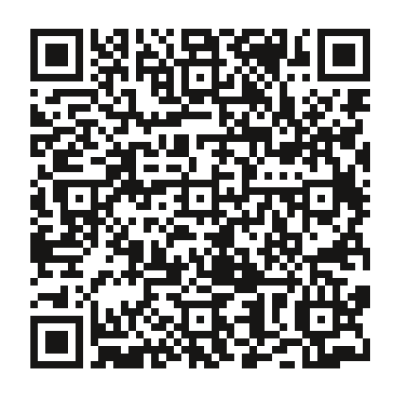GET STARTED WITH MMGUARDIAN FOR YOUR CHILD’S ANDROID PHONE

Install Child Device App
- Download the MMGuardian Parental Control app on your child’s phone.
- Log into the app using your MMGuardian account email address admin password.
- Follow the on-screen instructions to perform the initial setup.
- When you get to the app main screen with the 6 icons, proceed to step 3.
Manage and Monitor
- Configure child phone functions from the parent phone app.
- The Phone Usage menu item is where to view message and usage reports.
- The Lock and Location menu items are used to send those commands to the child app.
- For Time Limits, App Control, Contact Block, Web Filter etc, select the relevant menu item
DETAILED VIDEO INSTRUCTIONS
HOW TO USE MMGUARDIAN FOR ANDROID PHONE
The application must be registered before it will start functioning and for your trial period to commence. The following information is requested on the registration screen:
Parent Phone Number:
This is so that the app knows where to send the optional SMS admin alerts, and to action SMS Commands.
Password:
Your choice of password. If you already have an MMGuardian account, please enter your existing password.
Password Confirmation:
Repeat the password!
Parent Email Address:
This will be your MMGuardian account name. Please use an email account that your child does not have access to, as it’s used for things such as password recovery and reset. If you already have an MMGuardian account, please enter your existing email address.
Enter the information described above, and then tap on the Register button.
If you now see a pop-up screen requesting entry of “this phone’s number”, please enter the number of the phone that the app is being installed onto. Usually, the Android system is able to read the phone’s number, but when it can not, we show this pop-up screen.
Immediately following successful registration, you’ll be guided through some initial set-up stages, related to enabling the various mechanisms used to protect the application from tampering.
You will then be asked whether to enable the MMG Messaging app function. If you wish to block SMS messages, you should enable MMG Messaging.
The last known and historical locations can be viewed on a map. Tap the Update Location button to get the device’s current location.
Time Limits enables you to set times when the phone will be locked by the MMGuardian app. When a device is locked, the admin password must be entered to be able to use the phone (other than for making emergency service calls, or calls or texts to an admin phone).
Pre-configured Time Limits will be shown and can be turned on or off or removed using the green X (delete) button. To edit the times, tap on the relevant Time Limit entry. New Time Limits can be added.
When editing an existing Time Limit, or creating a new one, enter the desired start and stop times. To lock overnight, set the start time to be ‘after’ the end time, e.g. start at 10 pm and end at 7 am. Next, select the day or days for this specific lock schedule. Then tap on the Add Time Schedule button.
More than one schedule may be created to allow for different lock times on different days, for example to have earlier lock times on evenings before a school day.
If you are configuring time limits on the web portal or in the Parent App, as a convenience, all time schedules created for the app are available for reuse in other functions. When you start to add a new schedule, you’ll see any existing schedules listed and can select to use the schedule by clicking on the check-box so that the tick symbol shows in the box. Of course, you can also create totally new schedules.
App Control is used to either allow or block use of specific applications, or to set usage restrictions on when apps can be used.
You will see the list of apps that are currently installed on the child’s device.
By default, all apps are set as allowed. This is indicated by the green tick next to the app. To block an app always, tap on the green tick so that it changes to a red block symbol.
Enable the optional ‘automatically block newly installed apps’ function if you want to automatically have any newly installed apps to be set as blocked.
Usage restrictions for apps are set by creating one or more app groups, setting restrictions for the group and then adding the relevant apps to the relevant group.
Tap on the Groups tab and then the ‘add’ button to create a group.
Either or both of the following can then be set as restrictions for the group:
– Daily Limits: This will limit usage of apps in the group, in total, to the specified duration each day.
– Block Schedules: Set times when apps in the group should be blocked.
Finally, add the desired apps to the group.
You can create more than one group (e.g. Games, Social Media) but each app can only be in one group.
The location of the child phone can be obtained manually using the “Update Location” button on the Location Map screen.
For automated location updates, use the Track function, which allows you to pre-configure times to get recurring updates of the location of your child’s phone.
Up to four different Tracks can be configured.
For each Track, one or more time schedules is required to define the start and end times that the location will be obtained and the day(s) on which the schedule is in operation. For example, you may wish to create a Track to cater for school days. You might want to check the location of your child from 7 am through to 9 am, and again from 3 pm through to 5 pm. This requires the use of two time schedules, the first from 7 am to 9 am set for weekdays, and the second from 3pm to 5pm also on weekdays.
For each Track, you must also specify how often the location will be obtained such as every 15 minutes. In the above example, that would mean a location is obtained at around 7 am, and gain at 7.15 am, 7.30 am and so on up to 9.00 am; then again during the second time slot at around 3.00 pm, 3.15 pm etc. up to 5.00 pm.
Note that more frequent updates will cause a greater use of the phone’s battery. It is also possible to specify ‘once only’, which will cause a location to be obtained just once, at the start time.
This function allows you to block calls* and SMS text messages, and can be set to work in either block mode or allow mode.
Allow mode means that only calls* or texts from the contacts or numbers listed will be allowed. All other calls or texts will be blocked.
Block mode means that calls* or texts from the contacts or numbers listed will be blocked. All other calls or texts will be allowed.
To block SMS and MMS messages it is necessary to set the MMG Parental Control app to be the default messaging app for the phone, and for your child to use the MMG Messaging part of the MMGuardian app for SMS and MMS messages.
*IMPORTANT: If your child’s phone runs Android 9, it will only be possible to block incoming calls, please see: Android9. However, for phones using Android 8 or lower, and Android 10 or higher, it is possible to block both incoming and outgoing calls.
Text Monitor allows you to specify words that, if contained in SMS texts sent to or from your child’s phone, you will want to know about. If such a word appears in a message, an alert will be sent*.
Simply add words of concern to create a personalised list of words.
* For Text Monitor to work it is necessary to set the MMG Parental Control app to be the default messaging app for the phone, and for your child to use the MMG Messaging part of the MMGuardian app for SMS and MMS messages.
Prevent your child from accessing web sites that are not appropriate for children, using the Web Filter function.
Web Filter can be set to work with Chrome, or the built in safe browser part of the MMGuardian app.
When the MMGuardian browser is selected, MMGuardian will automatically block other popular web browsers, including Chrome, Firefox and Opera. Accordingly, your child must use the MMGuardian Safe Browser to browse the internet.
To enable Web Filter, select Web Filter from the menu, then tap the on/off button to turn it on.
Select the appropriate child age range. This will configure the Web Filter with default allow or block settings for each of the many categories that the web filter uses. The lower the age range, the more restrictive the default settings will be.
You may view and edit the category settings to match your specific needs.
Overrides can also be created. These are specific web site URLs (addresses) that should always be allowed or blocked, and will ‘override’ the site’s categorisation.
When using the MMG browser, there are two additional settings: Allow Downloads and Prevent Location.
Allow Downloads
This is disabled by default. When enabled, the browser will permit downloads of file types MP3, PDF and ZIP. Please however note that whether downloads are blocked or not relies on the URL of the file, and whether it ends with .mp3, .pdf or .zip.
Prevent Location
This is enabled by default. When enabled, it prevents web sites from obtaining the location of the phone. When it is disabled, then web sites may request the location of the phone. Please note that even when enabled, the user will be prompted via a dialog message whether to allow the specific location request. Currently, every request from a web site will be prompted – the MMGuardian Browser will not store the choice made for the site.
Try It Now!
Signup today, download the app and start your 14 day free trial.
Highly Rated
Average 4.2 from over 20,000 reviews




